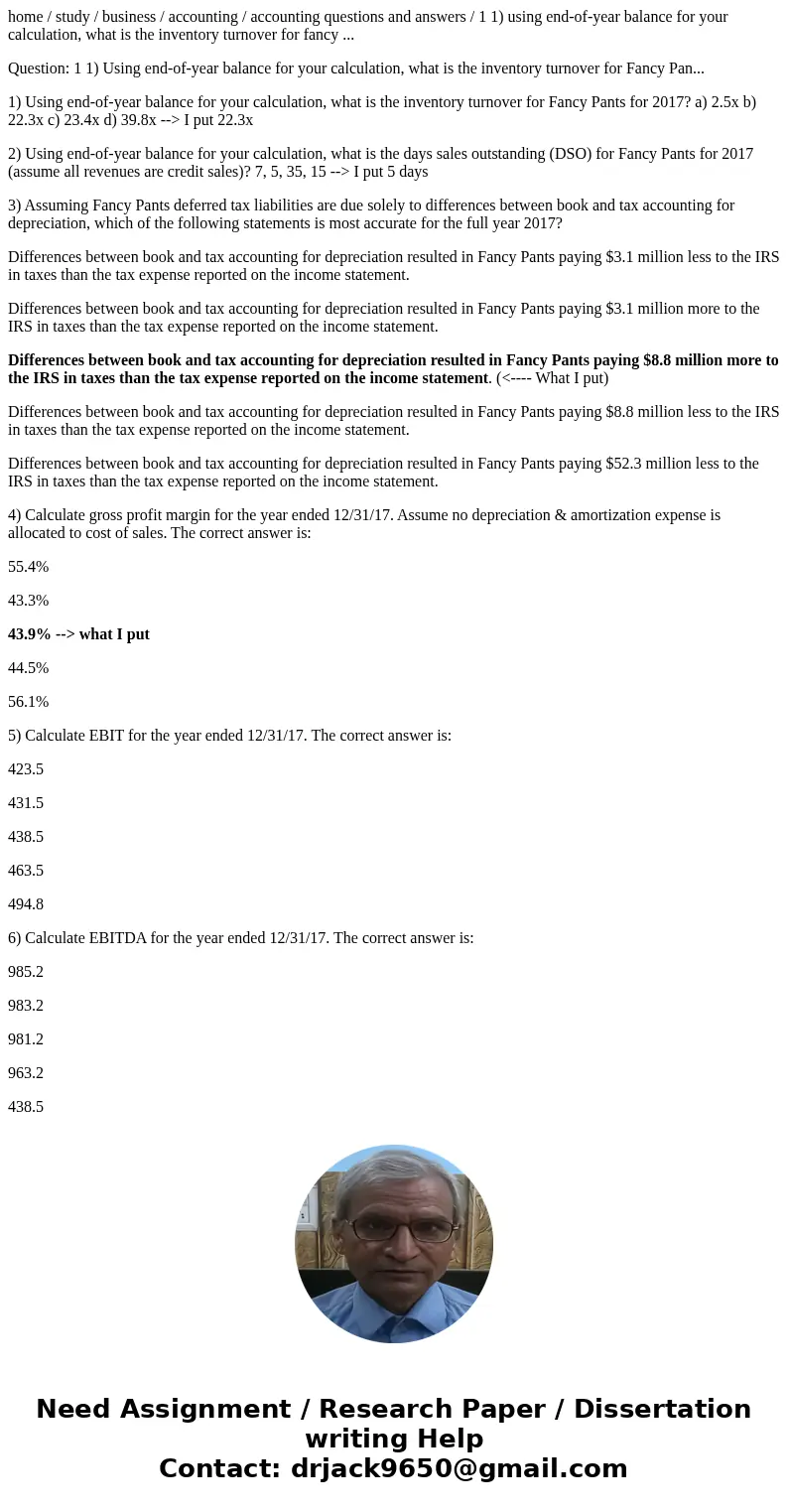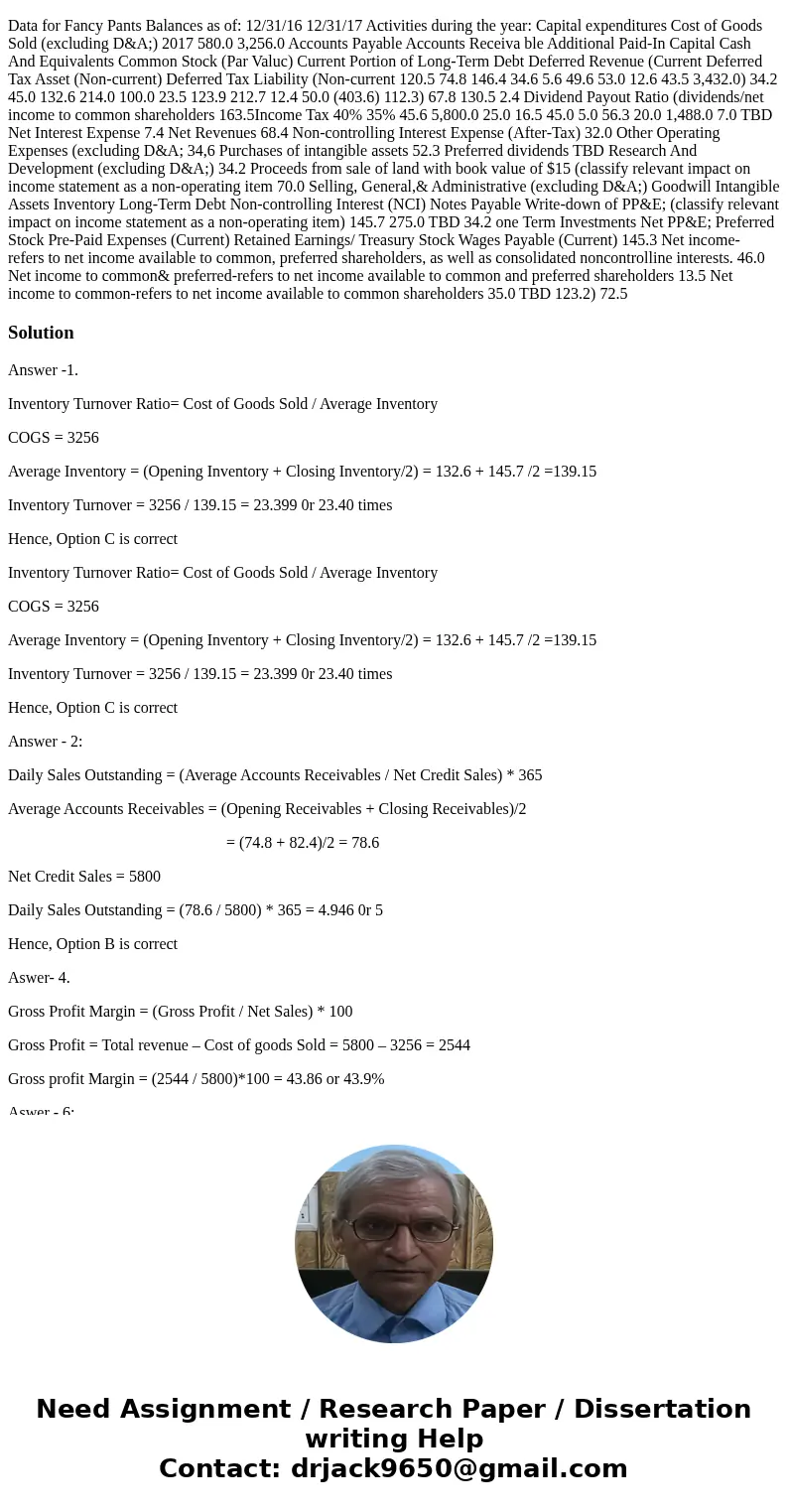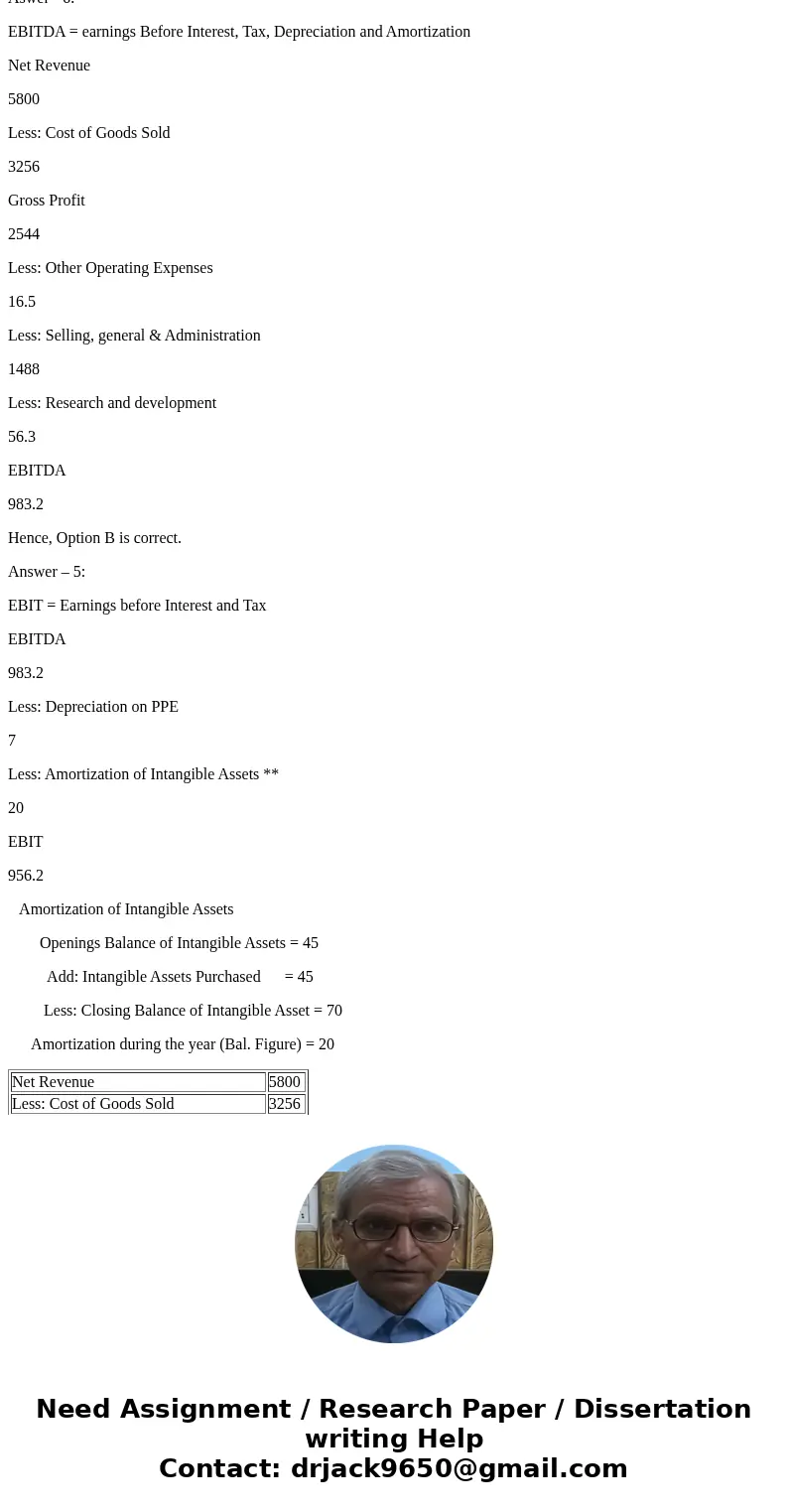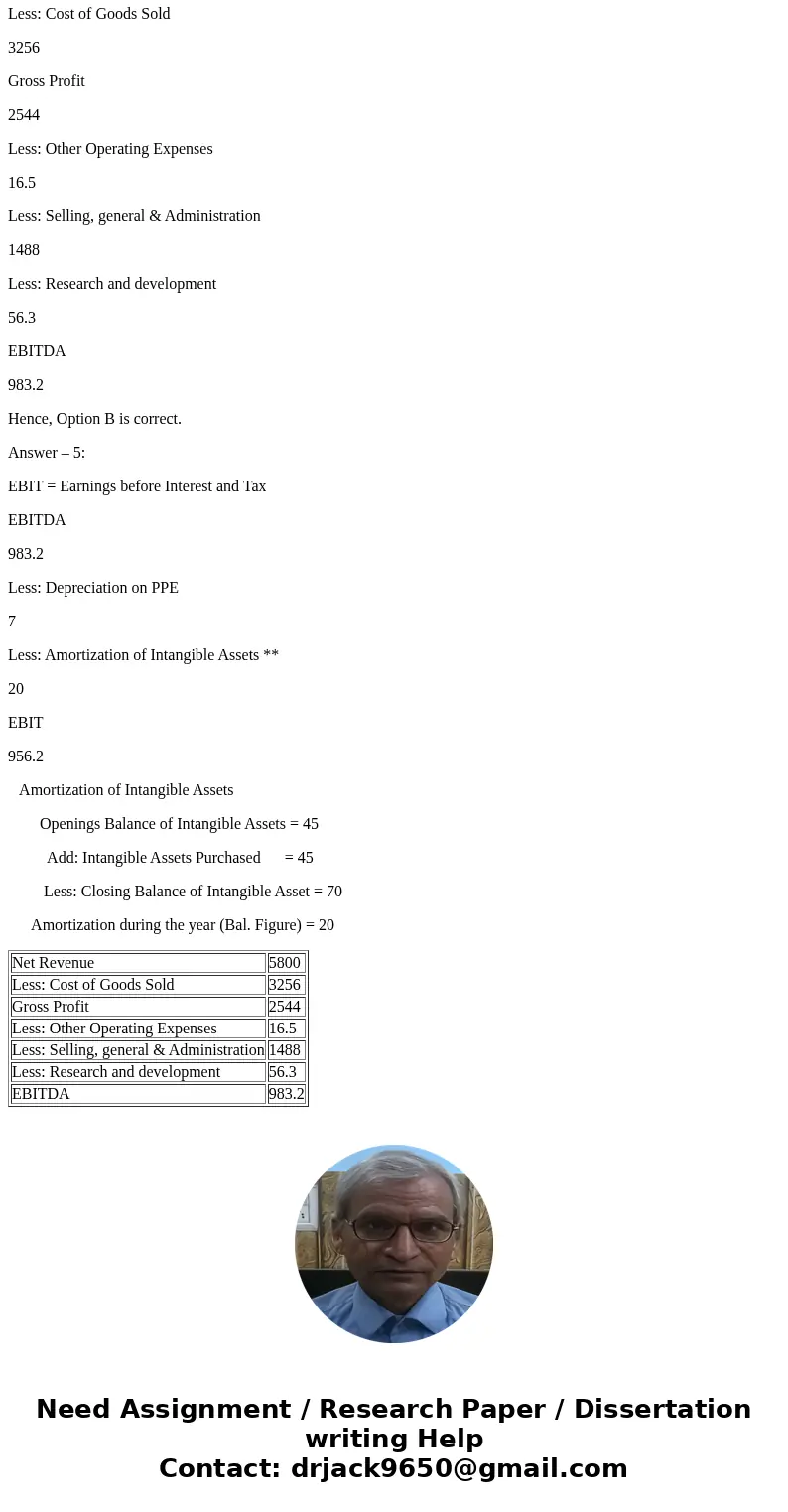home study business accounting accounting questions and
home / study / business / accounting / accounting questions and answers / 1 1) using end-of-year balance for your calculation, what is the inventory turnover for fancy ...
Question: 1 1) Using end-of-year balance for your calculation, what is the inventory turnover for Fancy Pan...
1) Using end-of-year balance for your calculation, what is the inventory turnover for Fancy Pants for 2017? a) 2.5x b) 22.3x c) 23.4x d) 39.8x --> I put 22.3x
2) Using end-of-year balance for your calculation, what is the days sales outstanding (DSO) for Fancy Pants for 2017 (assume all revenues are credit sales)? 7, 5, 35, 15 --> I put 5 days
3) Assuming Fancy Pants deferred tax liabilities are due solely to differences between book and tax accounting for depreciation, which of the following statements is most accurate for the full year 2017?
Differences between book and tax accounting for depreciation resulted in Fancy Pants paying $3.1 million less to the IRS in taxes than the tax expense reported on the income statement.
Differences between book and tax accounting for depreciation resulted in Fancy Pants paying $3.1 million more to the IRS in taxes than the tax expense reported on the income statement.
Differences between book and tax accounting for depreciation resulted in Fancy Pants paying $8.8 million more to the IRS in taxes than the tax expense reported on the income statement. (<---- What I put)
Differences between book and tax accounting for depreciation resulted in Fancy Pants paying $8.8 million less to the IRS in taxes than the tax expense reported on the income statement.
Differences between book and tax accounting for depreciation resulted in Fancy Pants paying $52.3 million less to the IRS in taxes than the tax expense reported on the income statement.
4) Calculate gross profit margin for the year ended 12/31/17. Assume no depreciation & amortization expense is allocated to cost of sales. The correct answer is:
55.4%
43.3%
43.9% --> what I put
44.5%
56.1%
5) Calculate EBIT for the year ended 12/31/17. The correct answer is:
423.5
431.5
438.5
463.5
494.8
6) Calculate EBITDA for the year ended 12/31/17. The correct answer is:
985.2
983.2
981.2
963.2
438.5
Data for Fancy Pants Balances as of: 12/31/16 12/31/17 Activities during the year: Capital expenditures Cost of Goods Sold (excluding D&A;) 2017 580.0 3,256.0 Accounts Payable Accounts Receiva ble Additional Paid-In Capital Cash And Equivalents Common Stock (Par Valuc) Current Portion of Long-Term Debt Deferred Revenue (Current Deferred Tax Asset (Non-current) Deferred Tax Liability (Non-current 120.5 74.8 146.4 34.6 5.6 49.6 53.0 12.6 43.5 3,432.0) 34.2 45.0 132.6 214.0 100.0 23.5 123.9 212.7 12.4 50.0 (403.6) 112.3) 67.8 130.5 2.4 Dividend Payout Ratio (dividends/net income to common shareholders 163.5Income Tax 40% 35% 45.6 5,800.0 25.0 16.5 45.0 5.0 56.3 20.0 1,488.0 7.0 TBD Net Interest Expense 7.4 Net Revenues 68.4 Non-controlling Interest Expense (After-Tax) 32.0 Other Operating Expenses (excluding D&A; 34,6 Purchases of intangible assets 52.3 Preferred dividends TBD Research And Development (excluding D&A;) 34.2 Proceeds from sale of land with book value of $15 (classify relevant impact on income statement as a non-operating item 70.0 Selling, General,& Administrative (excluding D&A;) Goodwill Intangible Assets Inventory Long-Term Debt Non-controlling Interest (NCI) Notes Payable Write-down of PP&E; (classify relevant impact on income statement as a non-operating item) 145.7 275.0 TBD 34.2 one Term Investments Net PP&E; Preferred Stock Pre-Paid Expenses (Current) Retained Earnings/ Treasury Stock Wages Payable (Current) 145.3 Net income- refers to net income available to common, preferred shareholders, as well as consolidated noncontrolline interests. 46.0 Net income to common& preferred-refers to net income available to common and preferred shareholders 13.5 Net income to common-refers to net income available to common shareholders 35.0 TBD 123.2) 72.5Solution
Answer -1.
Inventory Turnover Ratio= Cost of Goods Sold / Average Inventory
COGS = 3256
Average Inventory = (Opening Inventory + Closing Inventory/2) = 132.6 + 145.7 /2 =139.15
Inventory Turnover = 3256 / 139.15 = 23.399 0r 23.40 times
Hence, Option C is correct
Inventory Turnover Ratio= Cost of Goods Sold / Average Inventory
COGS = 3256
Average Inventory = (Opening Inventory + Closing Inventory/2) = 132.6 + 145.7 /2 =139.15
Inventory Turnover = 3256 / 139.15 = 23.399 0r 23.40 times
Hence, Option C is correct
Answer - 2:
Daily Sales Outstanding = (Average Accounts Receivables / Net Credit Sales) * 365
Average Accounts Receivables = (Opening Receivables + Closing Receivables)/2
= (74.8 + 82.4)/2 = 78.6
Net Credit Sales = 5800
Daily Sales Outstanding = (78.6 / 5800) * 365 = 4.946 0r 5
Hence, Option B is correct
Aswer- 4.
Gross Profit Margin = (Gross Profit / Net Sales) * 100
Gross Profit = Total revenue – Cost of goods Sold = 5800 – 3256 = 2544
Gross profit Margin = (2544 / 5800)*100 = 43.86 or 43.9%
Aswer - 6:
EBITDA = earnings Before Interest, Tax, Depreciation and Amortization
Net Revenue
5800
Less: Cost of Goods Sold
3256
Gross Profit
2544
Less: Other Operating Expenses
16.5
Less: Selling, general & Administration
1488
Less: Research and development
56.3
EBITDA
983.2
Hence, Option B is correct.
Answer – 5:
EBIT = Earnings before Interest and Tax
EBITDA
983.2
Less: Depreciation on PPE
7
Less: Amortization of Intangible Assets **
20
EBIT
956.2
Amortization of Intangible Assets
Openings Balance of Intangible Assets = 45
Add: Intangible Assets Purchased = 45
Less: Closing Balance of Intangible Asset = 70
Amortization during the year (Bal. Figure) = 20
| Net Revenue | 5800 |
| Less: Cost of Goods Sold | 3256 |
| Gross Profit | 2544 |
| Less: Other Operating Expenses | 16.5 |
| Less: Selling, general & Administration | 1488 |
| Less: Research and development | 56.3 |
| EBITDA | 983.2 |




 Homework Sourse
Homework Sourse